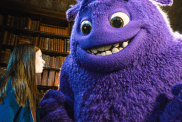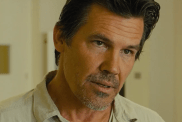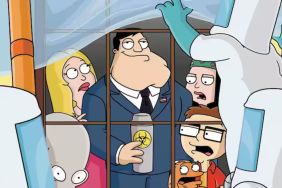The remake that gives you a good buzz

No one trick or treats on the last day of school, no one carves jack o’ lanterns on July 4th, or goes on haunted hayrides in August.
When it comes to beloved macabre traditions, the fall is the season that gets all the attention. Thanks to the celebration of Halloween, the autumn months have always been indelibly associated with all things frightful. Summer, on the other hand, is ostensibly all that horror isn’t about â a golden time of warm weather, trips to the beach, fireworks, road trips and family picnics.
For those movie buffs that prefer the inside of their neighborhood cinemas (or, for some, the nighttime chill of drive-in theaters) to the blistering heat, however, the summer is the real witching season. Some believe that horror vacations in summer, waiting for fall to arrive, but box office history tells a different story.
Starting in 1975 when Jaws invented the modern blockbuster by teaching a generation to be afraid of the ocean, summer has been the best time of year to be scared. The fall can keep Halloween. It can keep the costumes, the candy, the Great Pumpkin, all of it â because summer has always had the better movies.

I’m someone who’s already afraid to fly but if the day should ever come when science invents teleportation technology, David Cronenberg’s The Fly will be the reason that I have one more form of transportation to avoid. I don’t care how many safeguards they install in telepods, I’ll continue to take my sweet time going from Point A to Point B rather than get somewhere instantly only to have to worry about whether all my molecules are still human. Being atomized and reassembled is unhealthy enough but if you accidentally share a telepod with the wrong passenger, forget it. All it takes is a fly in the ointment to ruin your day.
At first, of course, it might seem okay. One of the great things about writer/director David Cronenberg’s reimagining of the 1958 classic The Fly is that in the early stages of scientist Seth Brundle’s metamorphosis from man to Brundlefly is that the changes he’s experiencing all appear to be improvements. Being the first human to go through the teleportation process and without knowing that his self-invented telepod has fused his DNA with that of a common housefly that, unobserved, made the journey with him, Seth attributes his new found superhuman strength and agility to what he assumes is the purifying effects of the teleportation process (as he reasons, it must work like a coffee filter on a molecular level). What really has occurred is that Seth has gained the proportionate powers of that wayfaring insect. Like Peter Parker gaining an arachnid’s abilities thanks to the bite of a radioactive spider, Seth has suddenly become impossibly strong â able to pulverize a wall with his fist or snap a man’s arm â and is now a world-class gymnast to boot.
What happens to Seth next, however, is as if the radioactivity in Peter Parker’s blood began to kill him, eating his body away with an accelerated form of cancer. Actually, it’s a lot worse than that. If all that happened to Seth Brundle was that he withered and died due to that telepod mishap, that wouldn’t be such an awful way to go. It’s no picnic, sure, but it beats the hideous ordeal that Cronenberg puts Seth through. As his condition worsens, Seth has good reason to utter the famous line from the original Fly, “Help me!”

Coming as it did smack-dab in the middle of the â80s, most critics took the tale of Seth Brundle’s physical deterioration as a metaphor for AIDS. But what makes the story of The Fly timeless is that the physical and emotional agonies brought on by Seth’s illness/transformation/what-have-you are analogous to the suffering associated with any terminal condition. The Fly is a monster movie that also happens to be about the process of dying, a subject with inherently universal meaning. In the hands of Cronenberg, though, it’s also not for the squeamish. Sights such as a hand being melted down to a bloody stump by a man-sized helping of acidic fly vomit set a new standard for how revolting a mainstream movie could be. I remember seeing The Fly in the summer of ’86 and watching a twentysomething couple flee from the theater as fast as their feet would take them after the early scene in which Seth teleports a baboon only to have it turn inside out in the process. It’s probably good that this couple didn’t stay for the rest of the film. I doubt that they would’ve appreciated The Brundle Museum of Natural History.
As well loved as the original Fly may be (based on a short story by George Langelaan, originally published in the June 1957 issue of Playboy), it’s a mostly silly film made immortal by its unforgettable final scene (a scene that instilled a strong sense of arachnophobia in countless impressionable viewers, including this writer) that plays out like the punchline to a brilliant sick joke. Starting with a screenplay by Charles Edward Pogue (Psycho III) that made the remake’s science much more plausible than the absurd notion found in the original of a man and a fly simply switching heads, Cronenberg’s film elevated the material to a more sophisticated level.
Cronenberg’s rewrite of Pogue’s work made the characters his own and created a tragic love triangle between Seth Brundle (Jeff Goldblum), journalist Veronica Quaife (Geena Davis, every bit Goldblum’s brainy, quirky equal as an actor) and her editor (and ex-lover) at Particle magazine Stathis Borans (John Getz, who successfully brought a dry appeal to a character who otherwise could’ve been just an asshole).
As Seth, Goldblum delivers a career-defining (and should’ve been Oscar nominated) performance. Seth’s initial geekiness, his chemistry with Veronica (Goldblum and Davis were real-life romantic partners at the time as well), his personal insecurities, his wired demeanor as the fusion with fly DNA keeps him perpetually energized, the way he evolves (literally) into a serious threat to those around him (as he tells Veronica after the famous “insect politics” speech, “I’ll hurt you if you stay.”), and ultimately his vulnerability as he must confront the loss of his humanity (“I’m an insect who dreamt he was a man and loved it. But now the dream is over and the insect is awake.”) â all of it is flawlessly acted. Even when Goldblum is encased from head to toe in make-up, his personality isn’t lost. In fact, these scenes are some of the most moving in the entire film, as when he pleads with Veronica not to abort their child (“The baby might be all that’s left of the real me.”).

Seth Brundle is such a richly imagined character that he isn’t often lumped into the reductive category of “mad scientist” but yet he is one of the classic examples of that particular archetype. When movie fans think of mad scientists, the most common image is of Colin Clive in the original Frankenstein (1931) and the black and white era of horror but mad scientists had a brief but gratifying modern resurgence in the mid-â80s, giving slasher villains a run for their money on theater screens. With Herbert West of Re-Animator (1985), Dr. Logan of Day of the Dead (also 1985), Dr. Pretorius of From Beyond (1986) and Seth Brundle, mad scientists were suddenly back in business.
The FX artists of the ’80s were mad scientists in their own right and with the FX wizardry of Chris Walas (Gremlins) and his crew bringing the many bodily changes of Brundlefly to life, by means of everything from prosthetic make-up to puppetry, The Fly is a classic showcase for practical effects â one that scored a much-deserved Oscar win for Best Makeup. Some might argue that The Fly would’ve been even more powerful if Cronenberg hadn’t alienated a large portion of the audience with gratuitous FX. But from the start of his career, the fact that his films housed imagery that many would regard as repulsive seemed incidental to him.
Cronenberg’s films followed the belief that if you’re telling a story that involves such never-seen-before sights as a vampiric underarm growth or anger-generated tumors, simply describing them through dialogue isn’t enough. They must be shown. In step with that, the transformative events of The Fly might’ve had most viewers making a face as though they swallowed a bug but every occurrence of a lost appendage, every eruption of fly vomit, served the story. Cronenberg has continued to deliver many brilliant mind-fucks in the years since The Fly but this was his last big blow out with the kind of outlandish biological horror that had been his calling card.

In Cronenberg’s early films, the human body was in constant revolt â often without the consent or understanding of the mind. His films expressed the existential quandary of being trapped inside a physical form subject to all manner of drastic changes, up to and including death. This preoccupation with the schism between mind and body was at its most poignant and poetic in The Fly. While we will be spared the horror of seeing ourselves turned into flies we will all, sooner or later, see our bodies come apart. We dread that inevitable process of physical decay and that’s the part of The Fly that speaks so deeply. The â80s fashions are out-dated and the special effects are no longer state-of-the art but the core of The Fly‘s story endures. As we wait for that day when we will feel some random pain that doesn’t turn out to be nothing and instead is the first signifier that our body is dying, we instinctively empathize with Seth’s discovery of his own mortality.
Death in horror movies is seldom painless but it is, almost always, quick. In The Fly, however, it’s slow, horrific to behold, and worst of all, Seth is conscious of every step he takes towards extinction.
It’s not uncommon for viewers to shed a tear at The Fly‘s tragic conclusion. But what really ought to choke up horror fans is how few other films in the years since have given The Fly‘s perfect DNA combo of intelligence, emotion, and graphic shocks any serious competition as one of the most accomplished genre films ever made. Almost twenty-five years now since its release, The Fly is still worth buzzing about.
(May 23rd)
Invaders from Mars (June 6th)
Psycho III (July 2nd)
Vamp (July 18th)
Aliens (July 18th)
Maximum Overdrive (July 25th)
Friday the 13th Part VI: Jason Lives (August 1st)
Manhunter (August 15th)
Dead End Drive-In (August 22nd)
The Texas Chainsaw Massacre 2 (August 22nd)
Night of the Creeps (August 22nd)
The Amityville Horror (Jeff Allard)
Phantasm (Ryan Turek)
SUMMER OF 1980:
Friday the 13th (Jeff Allard)
SUMMER OF 1981:
Deadly Blessing (Jeff Allard)
Wolfen (Ryan Turek)
SUMMER OF 1982:
Poltergeist (Jeff Allard)
Friday the 13th: Part 3 (Ryan Turek)
SUMMER OF 1983:
Psycho II (Jeff Allard)
SUMMER OF 1984:
Dreamscape (Jeff Allard)
SUMMER OF 1985:
Day of the Dead (Jeff Allard)





Source: Jeff Allard









